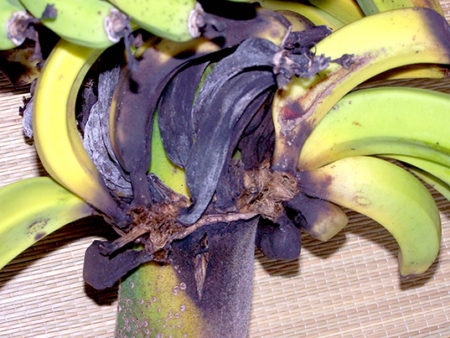August 21, 2019 – We have turned the world inside out to meet consumer demand when it comes to fresh produce. When I go to the supermarket here in Toronto I see displays awash with fruit and vegetables from domestic and foreign sources. If local produce is out-of-season, which in Canada, covers more than half the year, what I buy can come from South Africa, Spain, Mexico, Central and South America, and the United States. When I was much younger fresh produce choices over the winter were extremely limited. Then you would buy canned peaches, and pears, and other fruits and vegetables. But today, the aisle where the canned produce can be found is a shrinking phenomenon.
Why has this happened? Because in the 20th century we have developed refrigerated transport, and because we have created industrial agriculture, and in Developing World nations, a plantation system built for export. It always amazes me when my wife and I are in Costa Rica, that bananas served at a resort aren’t nearly as good as the ones Costa Rican growers ship to the supermarket just around the corner from me here in Toronto.
And since we are talking about bananas, the worldwide demand for this fruit has led producers to make some serious mistakes. Instead of encouraging genetic diversity and multiple varieties, the industrial farming banana world has repeatedly gone monoculture. One variety gets planted almost everywhere. The current king of the banana hill is the Cavendish. It has been the banana of choice globally since replacing an early monoculture, the Gros Michel, which succumbed to a fungus wiping it out in the mid-20th century.
The villain of the piece is America’s United Fruit Company. which you know as Chiquita Brands International today. With extensive agricultural holdings in Central America, principally Guatemala, the company established its industrial fruit-growing model controlling every aspect of the business from the labour, to the plants, to the transportation. In the 1950s the company’s revenues eclipsed those of Guatemala, that’s how much they dominated the business. The company even caused regime change there, that’s how powerful it became.
To make operations efficient they chose one banana variety to grow. The Gros Michel was the first. And now it is the Cavendish. And because these banana varieties are domesticated, they don’t grow through pollination and cross-fertilization. Instead they are cloned using cuttings. That means every plant descendant is an exact duplicate of the parent plant with no genetic variation. Great for the industry when everything is going well. Awful when an opportunistic new disease, pest or pathogen emerged. A pathogen that infected one banana plant could impact all.
The disease that wiped out the Gros Michel was fusarium wilt, a fungus that killed off the monoculture. And worse still, once the pathogen became established it made the very ground in which the plants grew inhospitable.
That’s how we got the Cavendish, a banana not equal to the taste of the Gros Michel, but capable of withstanding fusarium wilt. And now a new strain of fusarium wilt has emerged that is killing the Cavendish across Africa and Asia, and now Central America. It is likely that with the Cavendish’s inevitable demise that agriculturalists will have learned their lesson. After all, doing the same thing over again, expecting a different result but getting the same should make Chiquita or any other industrial agricultural business look at the deficiencies of monoculture and abandon the practice.
Of course, the industry is now seeking a Cavendish replacement, attempting to breed the current monoculture crop with older wild varieties in a hope to propagate a new disease-resistant variety.
So even though there are other varieties of domesticated bananas that appear in the supermarket produce section, the growers are still seeking the perfect industrial crop replacement. They want a banana that is as popular or as cheap as the Cavendish.
If you are interested in trying different varieties that have yet to succumb to fusarium wilt, here is a shortlist of a few from the more than 1,000 varieties found both domesticated and wild:
- Lady Finger or Baby – small, and sweeter than the Cavendish, these little bunches cost more but are the perfect size for a child.
- Burro – a lemony, tanga variety grown in Mexico.
- Candy Apple- very sweet, grown in Hawaii and slightly pink inside.
- Musa Belle – grown in Indonesia and also known as Pisang Raja.
- Pusang Awak – a popular variety also found in Indonesia.
- Red varieties – of which there are several are grown in East Africa, parts of Asia, South America and the United Arab Emirates. I occasionally see these in my grocery store. They are purportedly sweeter than the Cavendish.
- Cooking varieties – includes Fig, Benedetta, False Horn, and others but only served if baked or fried.
- Plantains – from small like the ones found in Hawaii to much larger than the Cavendish, these varieties are starchy and always baked or fried, never eaten fresh.
From one of these, or through genetic manipulation of the Cavendish will come the next monoculture, repeating the mistakes of the past yet once again. Agriculturalists have seen this so many times in the past with other popular crops from corn to wheat to coffee. Just seems we never learn.
















